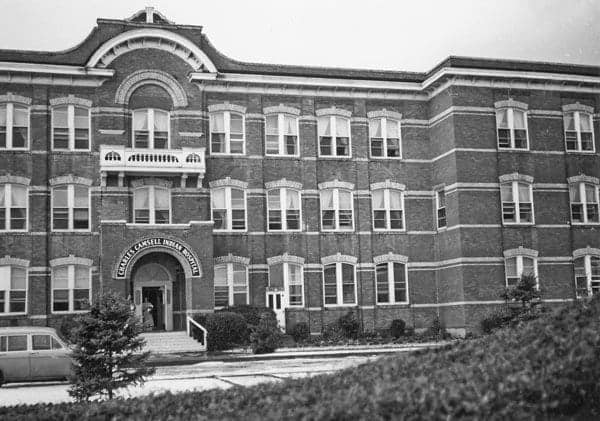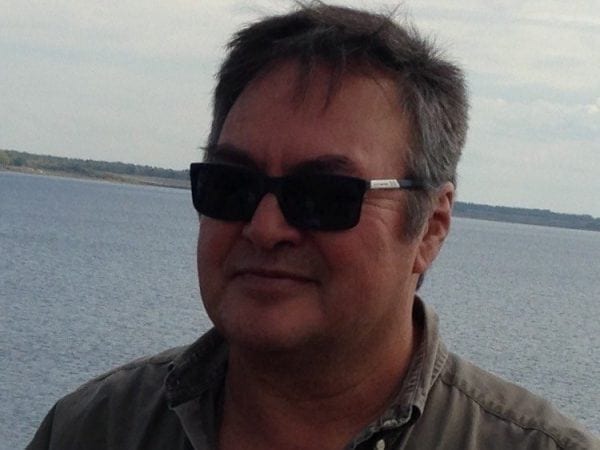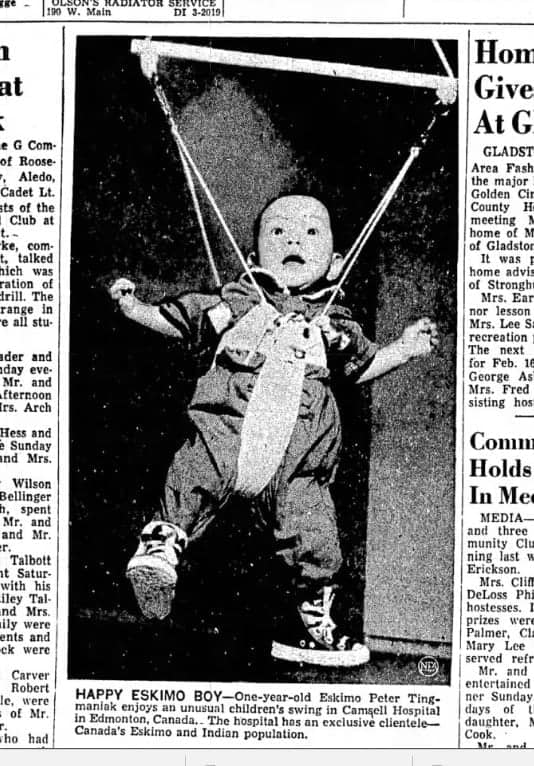Dene filmmaker Raymond Yakeleya wants to include Inuit voices in his documentary about Edmonton's federally-run Charles Camsell Indian Hospital.

What happened within the walls of Edmonton's Charles Camsell Indian Hospital will be brought to light in a new documentary project by award-winning Dene television producer, director and writer Raymond Yakeleya. The Camsell is also one of 29 Canadian Indian hospitals named in a statement of claim in the preliminary stages of a $1.1 billion class action suit filed in January.
"The Charles Camsell was a hospital that native people, from the mid-1940s until they closed, would come down to from the Yukon, the Northwest Territories (before division)," said Yakeleya.
"The stories that are coming out now are stories of abuses that took place at the Charles Camsell Hospital."
Yakeleya says he's in the initial stages of research, but so far he's heard allegations of experimental surgeries, drug testing, forced sterilization, and shock treatment. There are also allegations of sexual assaults, beatings, and forcible confinement. In addition, when patients died they were buried nearby, far from their home communities.
"All of the allegations are horrific. And they didn't do it only on adults. They also did it on children patients, as young as six or seven."

Dene filmmaker Raymond Yakeleya, who is beginning work on a documentary about Edmonton's Charles Camsell Indian Hospital, intends to include Inuit voices in the emerging stories about the federally-run facility.
The federal government ran the hospitals into the '80s. Yakeleya's issue is the lack of consent on the part of First Nations, Metis and Inuit patients, and he wants to tell their stories.
Lawyer Steven Cooper's firm has been researching the federally-run Indian hospitals since 2016. In January, Cooper Regel, along with firm Koskie Minsky, launched a $1.1 billion class action lawsuit naming 29 Indian hospitals, including the Camsell.
The suit has yet to be certified by a judge. A statement of defence has not yet been filed. The Canadian government is on the record as saying it wants to resolve the matter out of court.
The representative plantiff is Ann Hardy, originally from Fort Smith, NWT, who was sent to Camsell as a child of 10. She is bringing the claim forward on her own behalf and on behalf of any other Indigenous people admitted to an Indian hospital who may have suffered the same egregious abuses she alleges, as well as any family members.
The suit includes allegations of beatings with rods and sticks, isolation in rooms for long periods of time, food and drink deprivation without medical reason, physical restraint to hospital beds, forced feeding and forcible eating of patients' own vomit, along with widespread and common sexual abuse.
"It (the lawsuit) looks for justice for the people," said Yakeleya, who says his documentary will likely be a one-hour piece with statements from witnesses.
"I think there should be justice."

Peter Tingmaniak, identified in the Galesburg (Illinois) Register-Mail on Jan. 21, 1959, is the image seen in newspapers across North America and released by the Canadian government, according to Library and Archives Canada files, of the now controversial Charles Camsell Indian Hospital in Edmonton, Alta., one of 29 segregated hospitals subject to a $1.1 billion class action suit.
Cooper, commenting on the idealized photo of a one-year-old Inuk boy who was a resident at Camsell, released by the Government of Canada and widely published across North America in 1959, says he stopped being shocked by government propaganda about 20 years ago.
Cooper says he has been contacted by dozens of Inuit who were at Camsell or one of the other 28 Indian hospitals, a list which includes Frobisher Bay Hospital in what is now Iqaluit.
"And the number is growing. And we expect it's going to grow massively in the next six months or so," said Cooper.
"We're still researching. We know much more about Camsell and Nanaimo (Indian Hospital) than we do about most of the other institutions. Much of the documentation is stored away in Library and Archives Canada. We have teams of people going through the archives, prioritizing and making it available to us."
Cooper says he's getting a lot of questions from people in the Kitikmeot, who would have been sent down to the Camsell.
The 25-page statement of claim says the Indian hospitals, as operated by the federal government, were substandard facilities intended to segregate Indigenous persons from the rest of the Canadian population.
Cooper, who has been litigating for Indigenous people for decades, says it's not easy for people to come forward.
"When information like this gets out, whether it's the '60s Scoop or the Indian residential school system, people are taken aback. They're thinking about things they haven't thought about in decades – and often don’t want to," he said.
Raised in the Arctic, Cooper says he had family members who were sent to Camsell. The research so far hasn't shown to what extent segregation of Indigenous people was enforced.
"We've started (researching), we're not very far," he said.
"But I want to be clear – we've been working on it for a couple of years."
'The people were treated rough'
Both Cooper and Yakeleya are looking for the hidden answers only government documents and first-hand accounts can offer.
Yakeleya received a $8,500 research grant in March from the Heritage Council of Edmonton to get started on his documentary.
He wants former patients in Nunavut to get in touch. Originally from Tulit'a, Yakeleya went to school in Inuvik, and he recalls Inuit students. And just like Inuit were a part of the story there, they are a part of the Camsell story, and their voices should be included, he said.
He remembers students from Gjoa Haven, Coppermine (now Kugluktuk), Cambridge Bay.
"We started looking here in Alberta and in the Northwest Territories (for the documentary) – now we have to look to the Yukon and Nunavut, to make sure to encompass all the places the people came from," he said.
Yakeleya maintains it was impossible for children and people who did not speak English to consent to what happened to them.
"Nobody can consent – there were no translators," he said.
"One of the people that talked with me, an elder now, he was a child when he came down at six or seven. There's no way he could consent to medical experiments."
Yakeleya has a personal interest because his grandfather was sent to the Camsell for three years. So was former Chief Paul Wright.
"A very wise, humble and forward-looking chief of the Tulit'a Dene Band… He talked about having his ribs removed with no anesthetic. He talked about hearing his ribs, four ribs, falling into the metal plates. The sound of that. He said that sound never leaves his head. And there's always pain," said Yakeleya.
He also had an uncle, and other friends and relatives sent to Camsell. A friend of his mother's died at Camsell, and was buried as per the usual government policy, far from home.
"It really played havoc with her children. It was only years later they went to Indian Affairs for help to find her body, and Indian Affairs, instead of being helpful, created nothing but barriers. When they found where she was buried, there was just a number. We were so disgusted with that. She was a fine woman. Any town in the territories would be proud to have her. And that was the treatment our people got."
The filmmaker says the worst part about all the stories he's heard is they're true.
"You can't make this up. It's all Canadian history," he said.
"I'm reaching out. We never want to see this happen again. This story encompasses all people. I think it's important that when we tell this story of the Charles Camsell that we include everybody that was there. It's important not to leave anyone out. I know Nunavut people came down here and never got back home. It leaves a wound in your soul, in your spirit."
Yakeleya can be reached through his production company Earth Magic Media Group.
"We need your help. I think it's the right moment to ask for that," said Yakeleya.
"All through the phases of bringing people down here, it seems they didn't treat people with dignity. That's what bothers me. The people were treated rough."